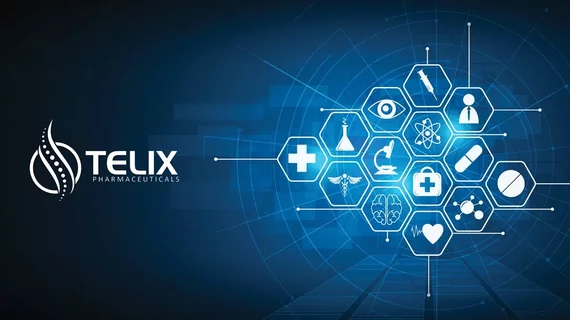Imaging agent developer Telix to buy RLS radiopharmaceutical network for up to $250M
Melbourne, Australia-based imaging agent developer Telix has reached a deal to acquire RLS (USA) Inc. for up to $250 million, the two announced Monday.
RLS operates America’s only Joint Commission-accredited radiopharmacy network, with 31 locations covering over 85% of the U.S. population. Headquartered in Lake Mary, Florida, RLS distributes PET and SPECT agents along with therapeutic radiopharmaceuticals, serving over 1,500 customers.
Telix said the acquisition aligns with its investment strategy of vertically integrating its supply chain, manufacturing and distribution. The deal will significantly expand its North American footprint and establish a “next generation” production operation to benefit Telix and its strategic commercial partners.
“Our vision is to build a radiometal production and distribution network fit for the future,” Christian Behrenbruch, PhD, MBA, managing director and group CEO at Telix, said in a statement shared Sept. 23. “By combining the ARTMS platform and the RLS network, we can scale up the production of key isotopes and build a stable and consistent supply of PET and SPECT diagnostic tracers, along with therapeutic radiopharmaceuticals, across the U.S. for the benefit of Telix, our partners and the patients we serve.”
In April, the company also announced it had completed the acquisition of radioisotope production technology firm ARTMS Inc. The deal included its advanced cyclotron-based isotope production platform, manufacturing plant and stockpile of ultra-pure metals used for consumable target production.
Under terms of the RLS deal, Telix will pay $230 million (USD) in cash upfront before certain adjustments. The company also will issue a deferred cash consideration of up to $20 million more, contingent on achieving certain milestones related to operational and financial performance following closing. Telix plans to fund the deal through existing cash reserves.
RLS tallied 2023 revenue of $158 million, and the transaction is expected to be cost-neutral to Telix from an operating cash flow perspective. The firm is currently a distributor of Telix’s imaging agent for prostate cancer, Illuccix, with the deal expected to incrementally grow earnings for the buyer.
Telix views the transaction as necessary to help ensure “product integrity and delivery and to strengthen and complement existing commercial partnerships.” The company also is working to release a new investigational agent for clear cell renal cell carcinoma (brand name Zircaix) and operates a “geographically complementary” production facility in Belgium.
“By augmenting its existing distribution network, Telix aims to provide additional supply chain backup and improve capacity to meet future demand, while broadening access for patients across the entire U.S. market, including under-served populations,” the company said in the announcement. “The acquisition aligns Telix’s pharmaceutical development workforce with RLS’ highly skilled and multidisciplinary radiopharmaceutical manufacturing, supply chain and operational expertise.”
RLS will continue to service existing customers and operate as an independent business under Telix Manufacturing Solutions.
“The RLS management team has emphasized quality, reliability and flexibility, and by leveraging Telix’s support, we will be able to expand our capabilities further and, together, build the radiopharmaceutical company of the future,” RLS CEO Stephen Belcher said in the same announcement. “We see this as a very positive step for the company, our people and our customer base.”

